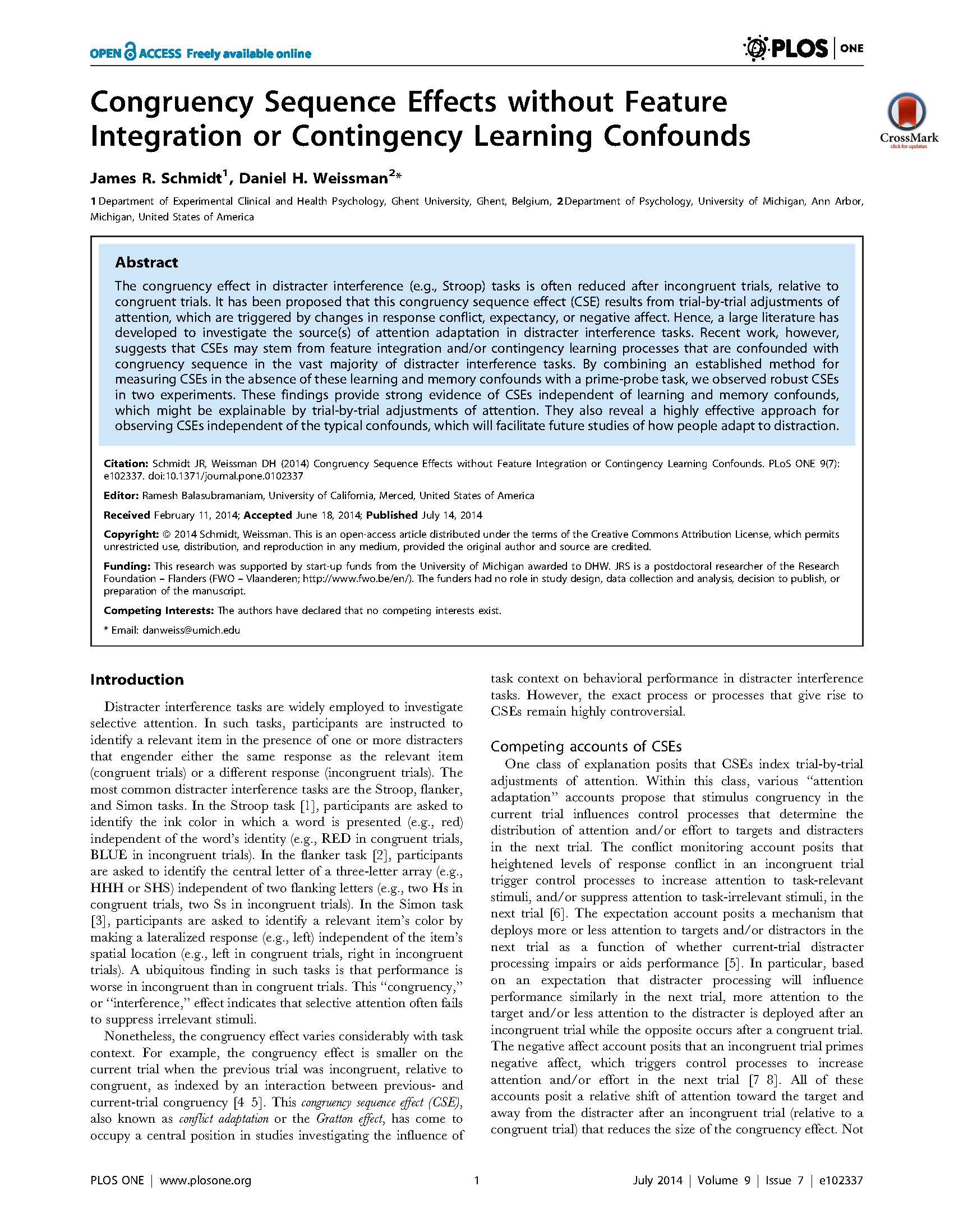The congruency effect in distracter interference (e. g., Stroop) tasks is often reduced after incongruent trials, relative to congruent trials. It has been proposed that this congruency sequence effect (CSE) results from trial-by-trial adjustments of attention, which are triggered by changes in response conflict, expectancy, or negative affect. Hence, a large literature has developed to investigate the source(s) of attention adaptation in distracter interference tasks. Recent work, however, suggests that CSEs may stem from feature integration and/or contingency learning processes that are confounded with congruency sequence in the vast majority of distracter interference tasks. By combining an established method for measuring CSEs in the absence of these learning and memory confounds with a prime-probe task, we observed robust CSEs in two experiments. These findings provide strong evidence of CSEs independent of learning and memory confounds, which might be explainable by trial-by-trial adjustments of attention. They also reveal a highly effective approach for observing CSEs independent of the typical confounds, which will facilitate future studies of how people adapt to distraction.
Congruency sequence effects without feature integration or contingency learning confounds
